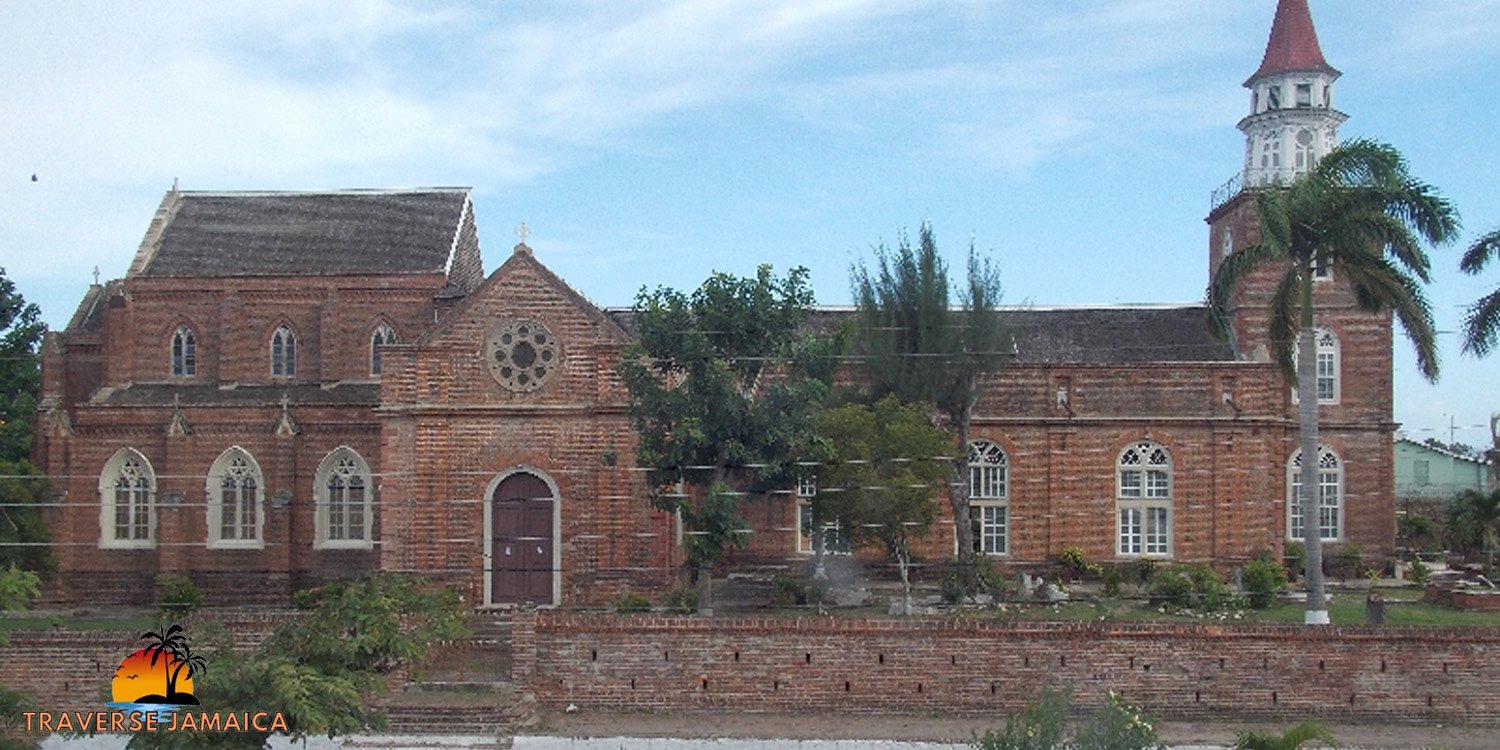Nestled in the heart of Spanish Town, Jamaica, the Spanish Town Cathedral, or St. James Cathedral, is celebrated as the oldest Anglican church outside of England in the Western Hemisphere. A landmark with deep historical roots, the cathedral is a significant piece of Jamaica’s colonial history and a spiritual stronghold for the local community. Built to serve the Anglican faithful during British rule, it has since evolved into a symbol of resilience, architectural heritage, and cultural identity. Today, St. James Cathedral stands as a historical treasure, drawing visitors for its rich past, architectural beauty, and continuing role in worship.
Historical Background
St. James Cathedral was originally constructed in the early 16th century after the British took control of Jamaica from Spain in 1655. Spanish Town, then known as Santiago de la Vega under Spanish rule, became the island’s capital under British control, which led to the town’s transformation into a colonial stronghold. Recognizing the need for a prominent place of worship, the British authorities established St. James Cathedral to serve the Anglican community. It was completed in 1714, earning its place as one of the oldest religious structures in the Caribbean.
The cathedral has survived various events, including natural disasters and political shifts, which have required restorations over the centuries. It was notably restored in the early 19th century after hurricane damage, ensuring its continued use as a place of worship. Throughout its history, the cathedral has symbolized Jamaica’s British colonial heritage while serving as a gathering place for the local Anglican community.
Architectural Significance
The architectural style of St. James Cathedral reflects the English Gothic influence typical of Anglican church design from that era. Built primarily with limestone, a material readily available in Jamaica, the cathedral boasts a robust structure designed to withstand the tropical climate. The exterior is marked by classic Gothic elements, including pointed arches, ribbed vaults, and flying buttresses, adding to the cathedral’s grandeur.
Inside, the cathedral features intricately carved wooden pews and altar pieces, which reflect the craftsmanship of the time. Noteworthy are the stained glass windows that illuminate the interior with colorful depictions of biblical scenes and saints, casting an ethereal glow during the day. The pulpit and organ, both historical pieces, serve as reminders of the cathedral’s age-old dedication to worship and music. Visitors often note the combination of English design with subtle Caribbean adaptations, giving the cathedral a distinctive aesthetic among other churches in the Caribbean.
Cultural and Religious Importance
Beyond its architectural beauty, St. James Cathedral has long been a center for community and worship. As the primary Anglican church in Spanish Town, it played a crucial role in spreading Anglican beliefs and traditions throughout Jamaica. The cathedral has hosted numerous ceremonies, from baptisms to weddings and state funerals, cementing its place in both personal and national histories.
Over time, the cathedral has become a symbol of Jamaican heritage, recognized by the Jamaican National Heritage Trust as a protected historical site. Its significance transcends religious lines, representing the resilience of Jamaican culture and the island’s evolution through colonialism to independence. The cathedral has also been associated with important local figures, including political leaders, colonial officials, and community organizers who contributed to Jamaica’s development. For Jamaicans, St. James Cathedral is not only a religious site but also a cultural icon, embodying their historical journey.
Current Status and Preservation Efforts
Today, St. James Cathedral remains an active place of worship and a vital part of Jamaica’s historical landscape. Given its age and importance, preservation efforts have been critical in maintaining the cathedral’s structure and beauty. Over the years, local organizations and heritage preservation groups have undertaken restoration projects to ensure the cathedral remains in good condition for future generations. These projects often involve structural repairs, especially to withstand the effects of tropical weather and potential hurricane damage.
Visitors can experience the cathedral through guided tours, which provide insights into its history, architecture, and role within the community. Special events and services are also open to the public, allowing people from around the world to witness the enduring spirit of St. James Cathedral. Through ongoing preservation efforts and community support, the cathedral continues to serve as a beacon of faith, history, and Jamaican pride.
Conclusion
As the oldest Anglican church outside of England in the Western Hemisphere, St. James Cathedral in Spanish Town is a remarkable relic of the past. It embodies centuries of faith, cultural resilience, and architectural heritage, bridging the gap between colonial history and modern-day Jamaica. From its Gothic-inspired architecture to its significant role in the Jamaican Anglican community, the cathedral is a unique testament to the island’s complex history and its people’s enduring spirit. Whether for worship, history, or admiration of architecture, a visit to St. James Cathedral is an invitation to connect with a piece of Jamaica’s soul.









